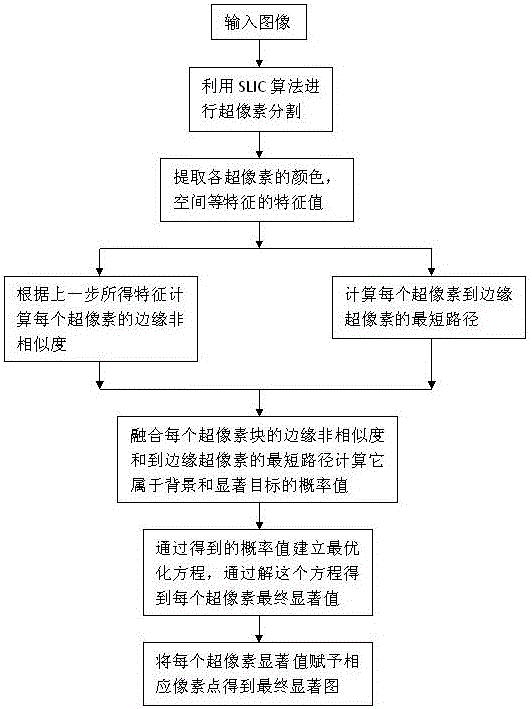Image saliency detection method based on edge non-similarity comparison
A non-similarity and detection method technology, applied in the field of image recognition, can solve the problems of unfavorable super-pixel saliency, destroying edge information, etc., and achieve the effect of reducing the amount of calculation, strong robustness, and suppressing noise interference
- Summary
- Abstract
- Description
- Claims
- Application Information
AI Technical Summary
Problems solved by technology
Method used
Image
Examples
Embodiment Construction
[0071] The steps of the present invention are:
[0072] (1) Pre-segment the detected image, and use the superpixel algorithm to divide it into a series of compact and uniform superpixel blocks, each superpixel block has certain integrity and consistency;
[0073] (2) Extract a series of eigenvalues of these superpixel blocks after pre-segmentation, including the serial number of the edge superpixel, the adjacency matrix of the superpixel, the average color value of the superpixel in the LAB space, the center position coordinates of the superpixel, the superpixel For the distance in LAB space, the Euclidean geometric distance of the superpixel pair on the source image;
[0074] (3) Calculate the edge dissimilarity of each superpixel value and the shortest path between superpixel pairs according to the eigenvalues of the superpixels in the previous step;
[0075] (4) Fusion of superpixel dissimilarity and the shortest path length value to the edge superpixel to calculate th...
PUM
 Login to View More
Login to View More Abstract
Description
Claims
Application Information
 Login to View More
Login to View More - R&D
- Intellectual Property
- Life Sciences
- Materials
- Tech Scout
- Unparalleled Data Quality
- Higher Quality Content
- 60% Fewer Hallucinations
Browse by: Latest US Patents, China's latest patents, Technical Efficacy Thesaurus, Application Domain, Technology Topic, Popular Technical Reports.
© 2025 PatSnap. All rights reserved.Legal|Privacy policy|Modern Slavery Act Transparency Statement|Sitemap|About US| Contact US: help@patsnap.com



